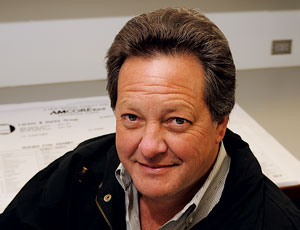...interest payments and is in default on 26 loans. General Growth Properties, the second- biggest mall operator in the U.S., says it may be forced to seek bankruptcy protection unless its lenders pull back on demands for loan refinancing.
Public-building owners are not in as big trouble, but many are scaling back as tax receipts dwindle. The University of Maryland, for example, spent $200 million in 2009 on construction. This year, the university’s request is about $170 million, says Terry Cook, associate vice president for administrative services and president of the Construction Owners Association of America.

At stake in the Legislature’s final funding decision is a $140-million performing-arts center at the university’s Baltimore County campus. It already has been designed and awarded to a construction manager. Three out of four COAA members have had some design work or construction delayed or stopped, according to an association survey.
“This is not going to be a fast recovery, and it will take significant time to get back to what we call more normal market behavior,” says Patrick Cebelak, controller of building contractor and CM Granger Construction Co., Lansing, Mich.
Another long-established building general contractor, G.E. Johnson Construction Co., Colorado Springs, Colo., has seen seven of its projects put on hold in the last six months because of funding issues. On one of the projects, “We recently completed laying the foundations for a project in Kansas that the owner had us backfill and walk away from,” says company President Jim Johnson. “Though the economics of that decision had an understandable short-term resolution, the long-term behind it didn’t make sense.”
Johnson says his company has work lined up for 2009, but after that it looks pretty lean. The difference from previous recessions is that it hit the whole Rocky Mountain region this time, he says.
Unlike specialty contractors, not all prime building contractors rely on banks for working capital. J.C. Harris and Granger say they have lines of credit but do not draw on them as sources of working capital. Cebelak says Granger funds projects from an investment portfolio that it uses for working capital and that it has gone down “just like everyone’s 401(k).”
Not all banks have quit real estate lending, either. While its parent company recorded a loss for the year, Torrey Pines Bank, San Diego, says it never engaged in risky real estate lending during the boom and is making loans cautiously for non-owner-occupied building development. Torrey Pines anticipated the coming storm and cut its real-estate loan portfolio 25% two years ago, says President Gary Cady.
“There were a number of situations where we required paydowns [by borrowers] to remargin a loan and for additional collateral. It used to be a criticism of our bank that it was conservative,” Cady says. “Now it’s a compliment.”
The Obama administration may continue to offer help to the banking industry, but there is a feeling that some of the rules have changed and that the projects that do go forward could require a new level of financial transparency and accountability by contractors, says Geno Armstrong, construction industry director with accountant KPMG. The days of working undercover are gone, he warns.
That could amount to a new dynamic favoring only the best-financed projects and players. As one source put it, “If you can prove you don’t need the money, the bank may consider giving you a little.”



Post a comment to this article
Report Abusive Comment